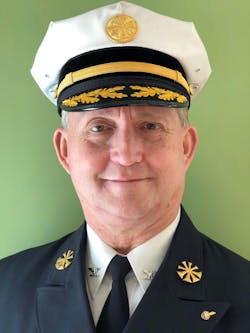Anyone can be sympathetic, but being empathetic isn’t as natural, and developing an empathetic attitude as an EMS provider takes time.
Empathy is an essential skill for EMS providers to foster. It helps such individuals to interact with a patient who is suffering from pain or crisis. It allows EMS providers to communicate more clearly and compassionately with their patient by “getting on the same wavelength.”
By nature, some providers are more empathetic than others are. The latter can fail to communicate compassionately with patients, largely because of differences culturally and/or socially.
Self-awareness, personality, mood, health and physiology all affect empathy. Understanding these and how to navigate them helps to enhance one’s ability to provide empathetic care.
Three key strategies to help you to navigate these influences are self-awareness, respect and appreciation of patients’ needs.
Self-awareness & emotional regulation
By acknowledging self-awareness and emotional self-control, EMS providers are better able to transform their patient treatment and care into a more empathetic experience. The more that a person understands and manages individual feelings, the better equipped that individual is to express and monitor them, to foster empathy and to discern appropriate behavior. This not only helps EMS providers to cope with personal stress, anger and depression but also to make them more resilient and empowered in their caregiving role.
Self-awareness is identifying one’s feelings, emotions, thoughts, strengths and weaknesses. Emotional regulation is the ability to control one’s emotions, feelings and reactions in the face of stress.
To work on self-awareness and emotional regulation:
- Set goals that are targeted at improving strengths and reducing weaknesses.
- Practice mindfulness, meditation or relaxation techniques to calm one’s mind and body.
- Seek support and guidance from senior EMS providers, mentors and counselors.
Listen actively and attentively
Attentive listening indicates mindfulness of what other people talk about, the relevant things that those people are interested in and their engagement. Consideration of the speech and tone of voice of other people also is important.
To demonstrate and provide an empathetic approach, listen to patients’ information considerately. This can be achieved by:
- Better understanding the patient, the situation, the condition, and the patient’s concerns and fears.
- Identifying the patient’s needs and expectations.
- Actively validating the patient’s feelings, thoughts and emotions.
- Creating a trustful rapport with the patient.
Ways to get across to a patient that you’re listening actively and attentively include:
- Making eye contact and interacting to show interest and attention.
- Keeping questions open-ended.
- Using prompts that encourage a patient to express more.
- Paraphrasing and summarizing to confirm understanding and to clarify the patient’s concerns.
- Expressing sympathetic statements and gestures to express support and genuine compassion.
Show respect and appreciation
An empathetic EMS caregiver must respect and appreciate patients. Respect and appreciation are the fundamental ethical values that reinforce empathy in EMS care.
For them and you
Appreciating each patient’s unique needs is particularly important. It fosters a deeper understanding and compassion, which enhances care. Empathy helps in effective communications, rapport-building and compassionate care when treating those who are in need and in distress. It also helps EMS providers themselves to mitigate stress and burnout that can result from continually experiencing high emotional loads. Hence, EMS providers must possess and improve empathy to become better caregivers and to maintain self-well-being.

About the Author
Richard Bossert
Richard Bossert is a retired operations chief for the Philadelphia Fire Department. He started in the fire/rescue services in 1970, volunteering for the Warminster, PA, Fire Department. He worked for three career fire departments: Chester, Bensalem and Philadelphia. Bossert became a certified EMT in 1973, then paramedic in 1980. He received a bachelor’s degree in pre-med from Pennsylvania State University in 1977 and a master’s degree in public safety administration from St. Joseph’s University in 2003.
Voice Your Opinion!
Voice Your Opinion!
To join the conversation, and become an exclusive member of Firehouse, create an account today!
April 1, 2025
Sponsored Content






